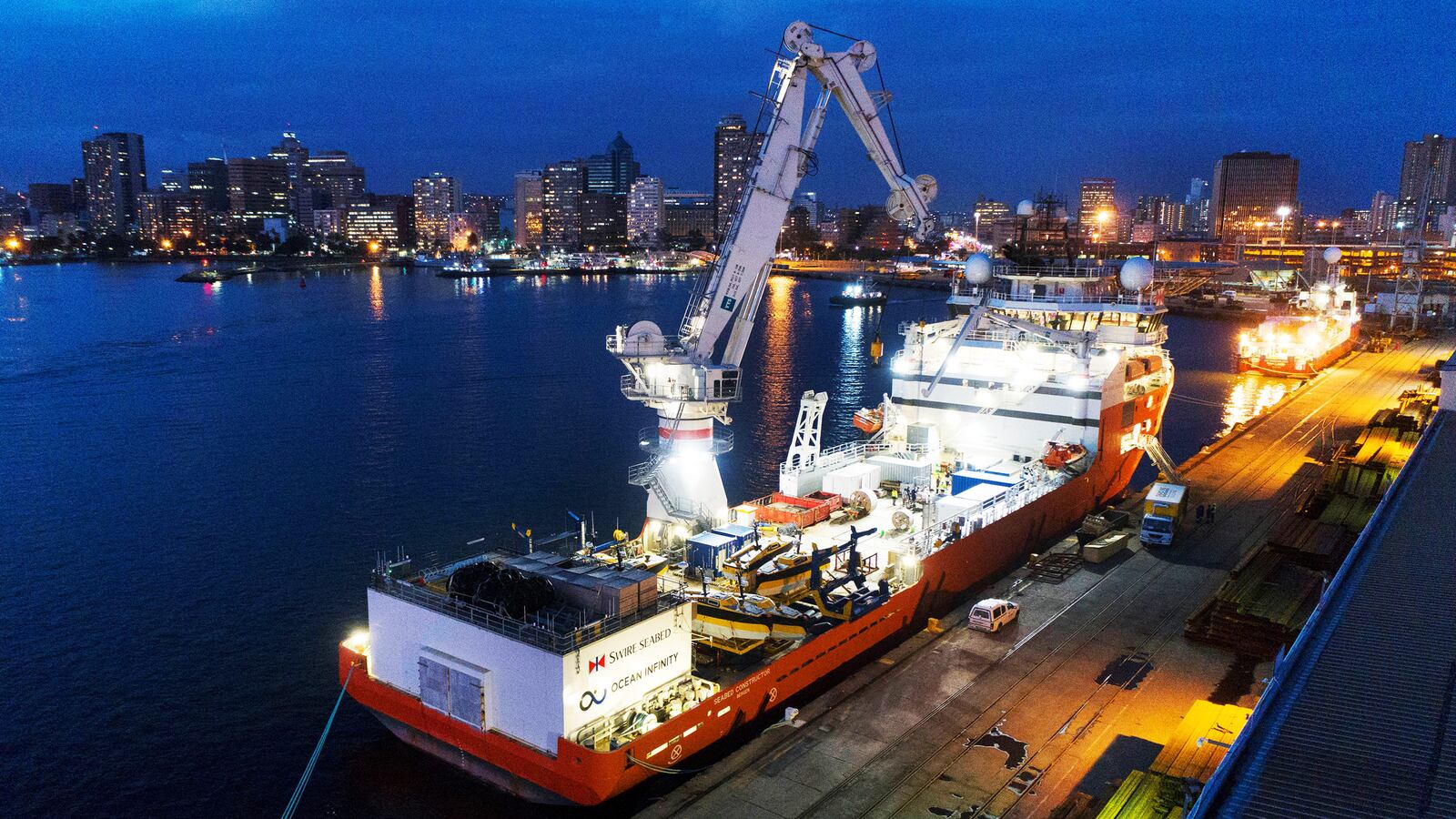What may well be the last chance of finding the remains of Malaysia Airlines Flight 370 is about to get under way. A U.S.-led team aboard one of the world’s most advanced undersea search vessels has arrived at the search area for the missing plane in the remote southern Indian Ocean, The Daily Beast can reveal.
It is a race against time because a window of more moderate weather that makes a search possible closes by the end of April.
The team from the Texas-based company Ocean Infinity are using for the first time a swarm of eight drone-like autonomous underwater vehicles, AUVs, to scour the ocean floor in an area not previously searched.
The AUVs are launched from the command ship, Seabed Constructor. The system is so untried that while en route from the Caribbean to the search site the vessel paused several times to carry out trials at depths similar to those at the Indian Ocean search site, up to 3.6 miles.
The new search will take place immediately north of the original search area that came up empty after 27 months. Flight MH370 disappeared in March 2014, with 239 people aboard.
The most vital part of the wreck to find is the airplane’s flight data recorder. There is no way of knowing if the data stored in the recorder can have survived so long at such great depths, but if the robot swarm locates the wreck, the Seabed Constructor has a remotely operated vehicle, ROV, capable of retrieving the recorder.

The original search was funded by Malaysia, China, and Australia and cost more than $150 million.
Ocean Infinity’s search is a gamble: the contract made with the Malaysian government is on a “no find, no fee” basis. They get nothing if the search is not successful, while the reward for a successful search could vary between $20 million and $70 million according to how much is discovered and whether it leads to solving the mystery of what caused the disaster—the greatest mystery in modern commercial aviation history. Details of the contract have not been disclosed.
Seabed Constructor is committed to a 90-day search. If it continues for that full period deteriorating weather would seriously limit operation of the robots; the single AUV used in the original search could operate only 30 percent of the time after the end of April because of the atrocious ocean conditions.
The greatest advantage claimed for the new technology over the old is that by using eight robots simultaneously, more than 460 square miles of seabed can covered every day, far more than before. The initial area given priority by the Malaysians is around 2,000 square miles. This area contains three “hot spots” identified by a team of Australian oceanographers last year as the most likely resting place of the Boeing 777.

If this search is unsuccessful two other areas immediately north and extending close to a latitude of 32 degrees south will then be searched, if conditions permit.
The robots have capabilities not available to the AUVs used in the first search. As well as highly advanced sonar side-scanning they have precise self-navigating equipment enabling them to hug closely to the contours of what is an extremely challenging underwater geology containing deep valleys, mountains and mud-spewing volcanoes. For most of the time the robots steer by dead reckoning and by using onboard cameras. Each one has a battery pack that gives them a total operating time of 60 hours.

Nothing on this scale with this equipment has been attempted before. Ocean Infinity has leased Seabed Constructor from a Norwegian company, Swire Seabed. The robots, Hugin 6000 models, were bought from another Norwegian company, Kongsberg Marine. Norway leads the development of deepwater search technology.
On Saturday another vessel, the Mearsk Mariner, left Perth in Western Australia to make a rendezvous with Seabed Constructor by Tuesday. It is a Dutch-owned tug and supply vessel capable dealing with the harsh conditions of the southern Indian ocean but will not take part in the search – it will deliver supplies required to enable Seabed Constructor to operate without returning to port.
If MH370’s flight data recorder is recovered it will be sent to Australia where the Australian Transport Safety Bureau operates a laboratory equipped to retrieve the data – unless the violence of the crash or the long immersion in deep water has damaged the data storage.
From the beginning of its calculated gamble Ocean Infinity has kept relatives of the victims of MH370 informed of its plans and all their hopes will now be pinned on the search as it finally gets under way.






